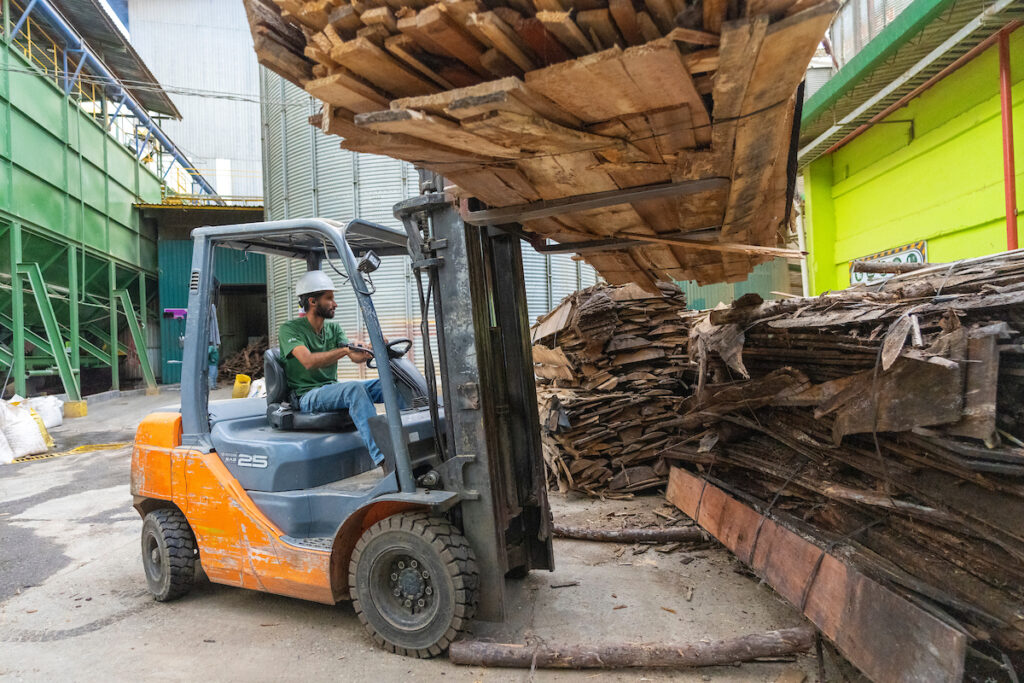Texas timber industry eyes new opportunities amid steady markets
Texas Crop and Weather Report
Texas’ timber industry continues to generate a significant economic impact for the state, with employment and output levels holding steady compared to 2023, said Eric Taylor, Ph.D., a silviculturist with Texas A&M AgriLife Extension Service and Texas A&M Forest Service.
Market conditions remain largely unchanged from two years ago, with strong demand for sawtimber, coming primarily from pine trees in East Texas.
On the flipside, there is an oversupply of smaller-diameter trees, keeping pulpwood prices soft, Taylor said.
East Texas timberland at the heart of production
Roughly one-fifth of the state, concentrated in 43 East Texas counties, provides about 12 million productive acres of timber out of roughly 22 million acres in the region.
Most of the land is privately owned, predominantly by small family landowners. A portion of the land is owned by timber investment management organizations and real estate investment trusts. An even smaller portion is public land.
The pine-dominated forests of East Texas supply dimensional lumber like two-by-fours and two-by-sixes, a backbone of the construction industry. Hardwood markets remain more variable, and the state’s pulp and paper industry faces continued challenges from oversupply, Taylor said.
Still, recent reinvestments and expansions by mills in the region signal confidence in the future of the Texas timber industry, he said.
Housing starts and timber markets remain linked
While the Texas timber sector generally operates as a net-importer state, trade with Mexico and Canada accounts for 88% of Texas’ exports and 42% of its imports in 2024, Taylor said.
The solid wood industry is closely tied to regional housing construction. Sawtimber markets are driven by demand for dimensional lumber and track trends in homebuilding, which have been mixed in recent years.
“Housing starts nationwide have slowed, and that does affect our markets to some degree,” Taylor said. “But Texas is doing better than much of the country. Housing construction here has held up relatively well. In fact, Texas housing starts have seen a recent increase after a two-year slowdown and that’s helped keep our sawtimber markets stable.”
Texas remains a significant contributor to national new home construction, accounting for nearly 17% of the nation’s total new homes. Taylor added that steady homebuilding activity in Texas is one reason mills have reenergized and reinvested in operations, with some even expanding.
Mass timber and new markets show promise
One bright spot is the growing interest in mass timber, a group of engineered wood products that is increasingly used in multistory commercial buildings. Advances in manufacturing have allowed laminated solid wood products to meet strength, stability, and safety requirements for large, open-span, and/multi-story construction. Mass timber is often used in place of concrete or steel.
“Architects and engineers are increasingly recognizing the aesthetic appeal and energy-efficiency of wood and mass timber, making them a practical choice for larger-scale projects,” Taylor said. “It’s a renewable and beautiful resource that also saves on heating and cooling costs. That’s one of the more exciting developments we’re seeing.”
Helping small landowners manage and profit
While industrial and large landowners benefit from economies of scale, most Texas timberland is held in smaller tracts — often under 100 acres — where sustainable forest management can be cost-prohibitive. The Texas A&M Forest Service is addressing this challenge by expanding financial assistance programs to help small landowners pay for management practices like thinning, site preparation and planting.
A new cost-share program, expected to roll out this fall, will reimburse up to 80% of the costs of qualifying management activities.
“These programs make it possible for smaller landowners to actively manage their timber and keep their forests healthy, which is critical for reducing fire risk, minimizing losses to insects and disease, and maintaining productivity,” Taylor said.
Landowners can visit the Funding Connector to identify funding opportunities available for their specific properties.
AgriLife Extension district reporters compiled the following summaries:
Central
A break in rainfall allowed fields across the district to dry out, enabling producers to resume operations. Corn harvest progressed rapidly, with good yields reported. Hay cutting and baling were widespread, with many producers finishing first cuttings and starting second ones. Armyworms were reported in several counties. Cotton was blooming with good boll loads reported, and sorghum neared maturity. Producers stressed the importance of continued sunshine and dry weather to prevent crop stress and potential aflatoxin. Pastures and livestock remained in very good condition, supported by full stock tanks and strong cattle markets.
Rolling Plains
Extreme heat moved into the district, drying pasture grasses and stressing some crops. Cotton showed strong growth and was performing well in most counties. Timely rainfall could help crops. Despite the heat, livestock remained in good condition, with ample forage available.
Coastal Bend
Drier conditions allowed corn and grain sorghum harvests to continue, though some fields showed reduced yields due to earlier drought. Corn continued to dry down and harvest was in high gear in some areas. Rice harvest began in early planted fields. Cotton appeared healthy with good yield potential. Hay production remained active, though some pastures showed signs of heat stress. Range and pasture conditions were fair to good. Livestock and forage availability remained steady.
East
Drier conditions helped dry saturated soils, enabling producers to catch up on hay production. Pasture and rangeland conditions were good, while subsoil and topsoil moisture remained adequate. Garden and vegetable production slowed. Cattle markets were strong, with higher prices reported in Anderson and Houston counties. Armyworms, grasshoppers and horn flies were present, and wild pig damage persisted in pastures and croplands.
Southeast
Forage harvest and hay production continued across the district, though scattered showers delayed field operations in some counties. Corn, rice, and sorghum made strong progress, while cotton and soybean development remained steady. Range conditions improved in some areas while other areas reported weather-related delays. Armyworm infestations increased in several areas, and rice kernel smut was reported in Waller County. Pasture and rangeland conditions varied from fair to excellent, with livestock conditions mostly good.
South Plains
Steady rainfall continued to support crop and pasture growth in the district. Most crop conditions ranged from fair to excellent. Growth regulators were applied to manage development ahead of forecasted heat. Pastures and livestock remained in good to excellent condition.
Panhandle
Light showers and cooler temperatures supported strong growth in summer crops. Most corn had tasseled or was tasseling, and sorghum performed well. Some insect pressure from cotton leafhoppers and fall armyworms was reported. Unharvested wheat remained in fields due to delays. Rangeland growth slowed, but cattle were in excellent condition. Soil moisture ranged from short to adequate.
North
Hot and humid weather continued in the district with some counties receiving sporadic rainfall. Soil moisture varied from adequate to surplus. Pasture and range conditions ranged from fair to excellent. Harvest of winter wheat, hay and garden crops progressed. Apples and figs benefited from earlier cool temperatures and wet conditions. Livestock remained in good condition, and no major pest or disease issues were reported.
West Central
Widespread flooding early in the week gave way to isolated rainfall and receding waters. Fields remained saturated, with producers still unable to enter some areas. Forage and cotton growth rebounded strongly following rains. Weed pressure increased rapidly. Standing water persisted in low-lying areas, and early planted sorghum neared harvest. Range conditions remained favorable, and livestock losses were minimal. Pastures greened up, and livestock conditions improved. Some producers reported hay losses and damaged fences.
Southwest
Widespread rainfall provided drought relief across the district, reviving pastures and filling stock tanks. Flooding occurred in parts of Kinney County, though soil moisture levels still lagged in some areas. Corn and grain sorghum matured quickly. Hay harvest resumed in drier areas. Pecan orchards showed good nut sets. Armyworms and Bermuda grass stem maggots were reported. Livestock markets held steady, and overall herd conditions were good. Wildlife also showed signs of recovery.
South
The district experienced rising temperatures, little rainfall and drying soils. Pastures and rangeland began to decline despite earlier rains. Heavy rain in northern areas caused localized flooding. Grain and corn harvest progressed, though yields were below average. Cotton and sesame crops advanced steadily, with open bolls reported in cotton fields. Citrus and pecans developed well. Peanut crops were irrigated and podding. Livestock and wildlife benefited from forage availability. Cattle markets remained strong, and wildlife activity was high, with frequent quail and turkey sightings.







